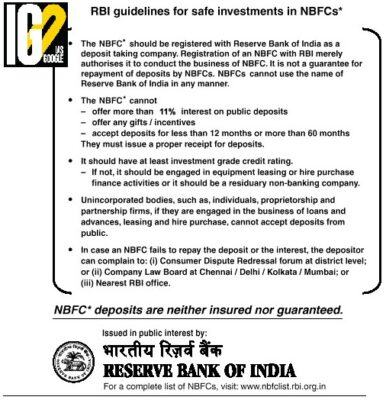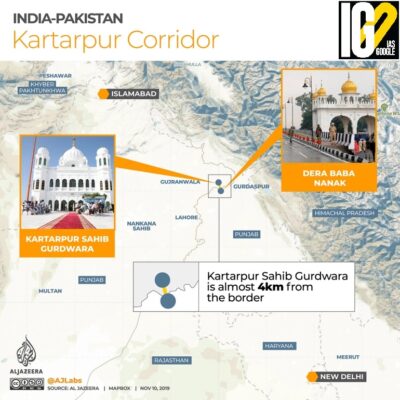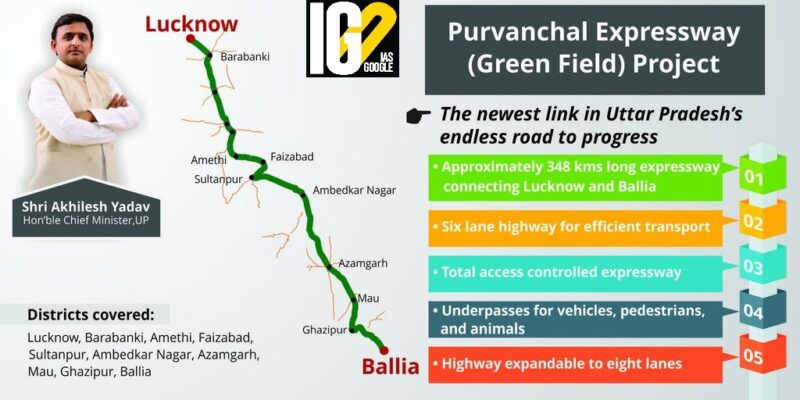- Home
- Prelims
- Mains
- Current Affairs
- Study Materials
- Test Series
 EDITORIALS & ARTICLES
EDITORIALS & ARTICLES
19th Nov 2021
RBI INTRODUCES INTERNAL OMBUDSMAN MECHANISM FOR SELECT NBFCS
Reserve Bank of India (RBI) introduced internal ombudsman mechanism for select Non-Banking Financial Companies (NBFCs).
Who is ombudsman?







 Prime Minister of India will inaugurate Purvanchal Expressway in Uttar Pradesh.
Prime Minister of India will inaugurate Purvanchal Expressway in Uttar Pradesh.

- An ombudsman is an official, usually appointed by the government, who investigates complaints against businesses, financial institutions, universities or other public entities.
- He/she attempts to resolve the conflicts or concerns raised, either by mediation or by making recommendations.
- Integrated Ombudsman Scheme is ‘One-nation-One Ombudsman’, with one portal, one mail and one address.
- Under this scheme, RBI has directed to appoint Internal Ombudsman (IO) within a period of six months to the:
- Deposit-taking NBFCs (NBFCs-D) with 10 or more branches and
- Non-deposit taking NBFCs (NBFCs-ND) with asset size of ₹ 5,000 crore and above having public customer interface.
- Implementation will be monitored by the NBFC’s internal audit system.
- The person appointed as the IO shall be either a retired or a serving officer.

- It is a company that offers various banking services but do not have a banking license.
- It is registered under the Companies Act, 1956.
- NBFC is governed by both the Ministry of Corporate Affairs and the RBI.
- NBFC cannot accept demand deposits;
- NBFCs do not form part of the payment and settlement system.
- It cannot issue cheques drawn on itself;
- Facilities of Deposit Insurance and Credit Guarantee Corporation is not available.
- It can provide loans and credit facilities.
- It can trade in money market
- NBFCs are the last resorts of borrowing;
- It is an alternate source of funding.
- It is a liquidity for the finance system.

- SIDBI in partnership with Foreign, Commonwealth & Development Office, UK launched ‘Swavalamban Challenge Fund’ (SCF) to help the entrepreneurs.
- Aim: To provide financial support to non-profit organizations, educational institutions, or social startups for addressing developmental gaps.
- Themes of the challenge: Women empowerment, financial literacy and inclusion, responsible business, sustainable livelihood, focus on green initiatives including climate change mitigation, adaptation measures, and offering solutions to reduce carbon footprint.
- Pilot Category: Applicants can apply with their proposal to pilot their innovative ideas
- Scale-up Category: Ongoing or completed projects done by the applicants for scaling-up will be nominated.
- Pilot category: Up to Rs 20 lakh
- Scale-up Category: Up to Rs 35 lakh for the
- Project period shall be more than six months and up to two years.
- A challenge fund is a fund support mechanism to allocate funds for specific purposes using competition among organisations.
- If there is an idea which needs to be scaled up, but funds are an issue, challenge fund provides a platform to present the idea in prescribed theme, implement and validate it.
- The same can be scaled up by leveraging another donor or financier support.

- The SIDBI was established under the Act of the Parliament 1988.
- Headquarters: Lucknow, UP.
- Aim: To promote, develop and finance MSME (Micro, Small and Medium Enterprise) sector.
- Focus on cleaner production and energy efficiency.
- It helps MSMEs in acquiring the funds required to grow, and commercialize their technologies and innovative products.
- The bank provides several schemes, financial services for meeting the individual’s requirement of various businesses.
- It discounts and rediscounts bills.
- It helps in expanding marketing channels for the products of SSI (Small Scale Industries) sector in domestic and international markets.
- It offers services like factoring, leasing etc. to the industrial concerns in the small-scale sector.
- Promotes employment-oriented industries in semi-urban areas for creating employment opportunities.
- Initiate steps for modernization and technological up-gradation of current units.
- It enables the timely flow of credit for working capital as well as term loans to Small Scale Industries in cooperation with commercial banks.

- The Belarus–European Union border crisis is a migrant crisis consisting of an influx of migrants, to Lithuania, Latvia, and Poland via those countries' borders with Belarus.
- The crisis was triggered by the severe deterioration in Belarus–European Union relations.
- The current president of Belarus, who had been in power for the last 25 years, cracked down on protests erupting throughout the country, and forced the leader of opposition, into exile in Lithuania while jailing other opposition leaders.
- This prompted the EU to take coercive action against his regime, applying increasingly restrictive measures starting in October 2020.
- A flight was forced down by a Belarusian fighter jet so that the Belarusian regime could arrest two dissident journalist passengers.
- In response, EU banned Belarusian air carriers from EU airports and airspace.
- To retaliate against the sanctions from European Union, Belarus started to influx migrants from middle eastern countries into countries which share its borders.
- The main aim behind this move is to create a deliberate humanitarian crisis on European Union’s frontier.
- Thousands of people are stuck in limbo between two nations that won’t accept them.
- Belarus lured the migrants by easing its immigration policies and convinced them to move into Poland.
- Poland, where the border crisis has been most acute, is already on the outs with EU leadership over democracy issues, and immigration has long proved a particularly thorny issue for EU
- During the 2015 refugee crisis, Poland was one of the most strident critics of the EU’s migration policy.
- EU charged Polish government to pressure judges and bring them under political control.
- In October, the EU levied a 1 million euro per day fine against Poland for violating EU rules, and Poland has also enacted increasingly harsh restrictions against LGBTQ citizens and the media.
- Poland is now relying on EU sanctions and calling upon Northern Atlantic Treaty Organization (NATO) to deal with the issue.
- Turkey banned Syrian, Yemeni and Iraqi citizens from flights to Poland.
- Iraq and Dubai, have limited or cancelled their flights to Belarus in order to stem the flow of people into the country.

- The Kartarpur Corridor is a visa-free border crossing and corridor.
- It connects the Darbar Sahib Gurdwara in Narowal district of Pakistan with the Dera Baba Nanak shrine in Gurdaspur district of
- The Corridor allows devotees from India to visit the gurdwara in Kartarpur, on the Pakistani side without a visa.
- Only Indians resident or overseas citizens can travel by corridor.
- However, Pakistani Sikhs cannot go to Dera Baba Nanak on the Indian side without first obtaining an Indian visa or unless they work there.
- The length of the corridor is about 4 km.
- It was first proposed by Atal Bihari Vajpayee and Nawaz Sharif.
- It is situated on the banks of river Ravi.
- The corridor was built in 2019 on the 550th birth anniversary celebrations of Guru Nanak Dev.
- Guru Nanak was born in Dera Baba Nanak and spent the last 17 years of his life in Kartarpur Sahib.
- He is the founder of Sikhism.
- He is the first of the 10 Sikh Gurus.
- He advocated the 'Nirguna' form of bhakti.
- The stories of his life were collected in anthologies called the Janam-sakhis.
- Guru Arjan compiled Baba Guru Nanak’s hymns called
- Guru Nanak Dev Ji took the last breath in Kartarpur Sahib Gurudwara.

- 23 scientists and support staff reached the Indian Antarctic station, Maitri.
- Four more batches will reach Antarctica by air and chartered ice-class vessel MV Vasiliy Golovnin by mid-January 2022.
- Geological exploration of the Amery ice shelf at the Bharati station.
- This will help, explore the link between India and Antarctica in the past.
- Reconnaissance surveys and preparatory work for the drilling of 500 metres of ice core near Maitri.
- It will improve the understanding of the Antarctic climate, westerly winds, sea-ice, and greenhouse gases for the last 10,000 years.
- It will replenish the annual supplies of food, fuel, and spares for operations and maintenance of life support systems at Maitri and Bharati.
- Antarctica is Earth's southernmost continent.
- It contains the geographic South Pole situated in the Antarctic region of the Southern Hemisphere.
- It is the fifth-largest continent with more than 14 million square kilometers.
- Temperatures are consistently below zero throughout the year.
- The Dry Valleys in Antarctica are the driest places on earth.
- The Antarctic Ice Sheet is the single biggest mass of ice in the world and sometimes be up to four miles thick.
- The continent contains about 90 percent of the planet's freshwater ice and 70 percent of the total fresh water on earth.
- It holds one of the world's biggest mountain ranges - the Gamburtsev Mountains, which stretch out more than 1200 kilometers.
- The Grand Canyon is biggest natural rift, on the trench of Antarctica
- Because of the earth's tilt, the sun does not rise in Antarctica, it remains dark throughout the entire winter season.
- The Indian Antarctic Program is a multi-institutional program under National Centre for Polar and Ocean Research, and Ministry of Earth Sciences, India.
- It was initiated in 1981 with the first Indian expedition to Antarctica.
- Dakshin Gangotri
- It was built in 1983.
- it was excavated and used as supply base and transit camp.
- Dakshin Gangotri was decommissioned in the year 1990.
- Maitri
- Maitri, was put up in 1989 and has been conducting experiments in geology, geography, and medicine.
- It accomplished the mission of geomorphologic mapping of Schirmacher Oasis.
- Bharati
- Located beside Larsmann Hill Bharati was established in 2015.
- It will collect evidence of continental breakup to reveal the 120-million-year-old ancient history of the Indian subcontinent.
 Prime Minister of India will inaugurate Purvanchal Expressway in Uttar Pradesh.
Prime Minister of India will inaugurate Purvanchal Expressway in Uttar Pradesh.
- This will be the longest operational expressway of India.
- It connects Lucknow and Ghazipur district.
- It is developed by the Uttar Pradesh Expressways Industrial Development Authority (UPEIDA).
- It has a 3.2 km long airstrip at Sultanpur district for emergency landing of aircrafts.
- The eastern region of Uttar Pradesh would also be connected to the national capital of Delhi through the Agra-Lucknow and Yamuna Expressways.
- It is the highest sporting honour of India.
- It was Instituted in 1991–92 and was formerly known as the Rajiv Gandhi Khel Ratna Award in Sports and Games.
- It is awarded annually by Ministry of Youth Affairs and Sports.
- The Ministry of Youth Affairs and Sports had announced the National Sports Awards.
- Awards given for: "spectacular and most outstanding performance in the field of sports over a period of four years" at international level.









 Latest News
Latest News General Studies
General Studies